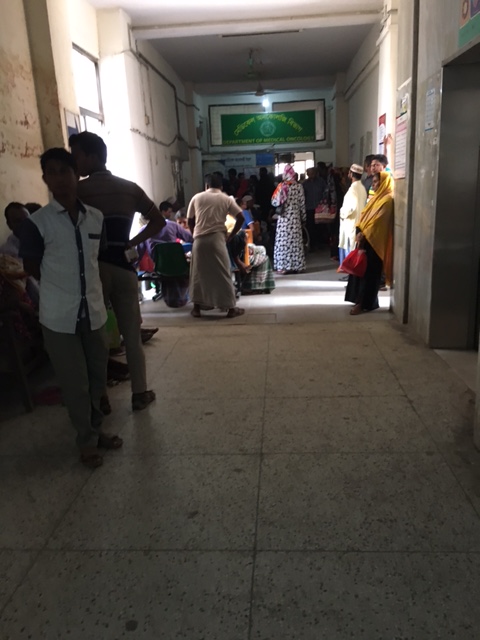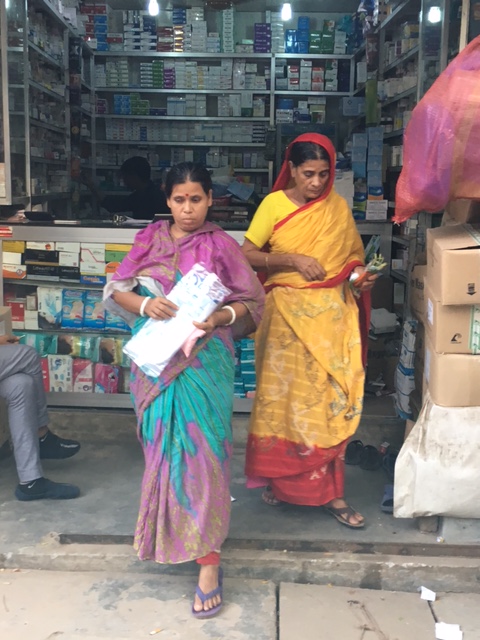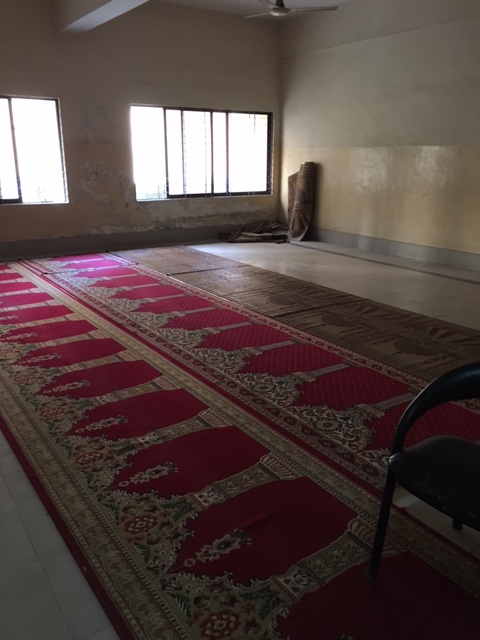Day Four In Bangladesh
NECS President and lead physician Dr. Tracey F. Weisberg is on a medical mission trip to Bangladesh, offering care to breast cancer patients, and medical education to physicians. She is sharing some of her experience here on our blog.
Four days in Bangladesh. It has been extremely hot and muggy with limited air conditioning within the hospital. Because this is a Muslim country, women cover themselves even in the extreme heat. Because I am not Muslim, I am allowed to have my head free of a Hijab or Shayla, but coverage of arms and legs is essential. I am starting to adapt, but appreciate the shower and air conditioning in my Western-style hotel.
Our day begins with morning rounds much like in a US hospital. I have not been able to really understand the process of rounding as we seem to skip from ward to ward seeing patients that the lead physician chooses for the day. Some might be new admissions. Others I think have lingered as inpatients for months. Our input is truly valued. Choices in care management are frequently made with regard to the cost of the medication or procedure. A limited number of drugs are provided for free, and the physicians are grateful that morphine sulfate has recently been added to this list.
One poor 20 year old woman that we saw had a massive right breast cancer that had eroded through the skin. She has lived in these conditions since July. Her family is still waiting to hear from the physician regarding the possibility of surgery, which I knew in an instant is never a possibility. Palliative care is only starting to be recognized as an appropriate option to offer and discuss in this country.
In the National Cancer Center, Pediatric cases are mixed into the womens' wards. Osteosarcoma is a common diagnosis here, and we have seen 4 young children as well as a teen suffering from very advanced cancers that erode through the flesh. Another child in an adjacent bed has a retinoblastoma. We have given all the children Beanie Babies, and I think this brought a smile to some that have not done so in weeks.
After rounds we stop for 1 hour and have tea and mingle with other physicians to exchange thoughts.
 After tea and before lunch we are in the clinic seeing outpatients. This is an incredibly chaotic process, and hard for me to watch much less
After tea and before lunch we are in the clinic seeing outpatients. This is an incredibly chaotic process, and hard for me to watch much less  participate in. There is little direct discussion with patients about their diagnosis, treatment possibilities and anticipated outcome. The visits are short, perhaps 5-7 minutes, and if the patient is medically fit, results in the writing of a prescription for chemotherapy.
participate in. There is little direct discussion with patients about their diagnosis, treatment possibilities and anticipated outcome. The visits are short, perhaps 5-7 minutes, and if the patient is medically fit, results in the writing of a prescription for chemotherapy.
This chemotherapy usually needs to be purchased by the patient and several vendors have made life easy for those seeking care in this hospital by setting up makeshift pharmacies right on the dirt road in front of the main hospital building so that patients can purchase the required medication. There is no refrigeration. I wonder how stable these drugs are by the time they actually are administered to the patient.
(Above, patients wait to be seen in the medical clinic. Right, patients purchase chemotherapy drugs at a makeshift pharmacy outside the hospital.)
The nurses on this medical mission have been working with the hospital nurses on infection control and chemotherapy safety. Although there is a hood for mixing drugs, few are mixed in the hood. As a matter of fact, common practice is to keep the drug at the patient’s bedside. Again no environmental control/refrigeration, and temperatures have been in the mid 90s. The nurses inject the chemo directly into the IV bag, frequently combined with antiemetics. Until our arrival, gloves were not used, and there was no regard for aerosolization of the compounds or spills.
 After lunch (and prayer) we have been having afternoon lectures on a variety of cancer related topics.
After lunch (and prayer) we have been having afternoon lectures on a variety of cancer related topics.
(Left, a prayer room inside the hospital)
The physicians have a big heart and are trying to do the best they can to serve these patients but there is no doubt in my mind, the odds are stacked against them.


